
Vincent van Gogh is the most iconic artist of Post-Impressionism
Vincent van Gogh (born on March 30, 1853 – died on July 29, 1890) was a Dutch artist who became one of the most influential painters in the history of Western art. His canvases, painted in the style of Post-Impressionism, continue to make a powerful impression with their extraordinary combination of colors and captured emotional impulses. Today, Van Gogh's paintings hold the status of being the most expensive in the world, and the museum named after this artist has become the most visited in the Netherlands, attracting 1.5 million art enthusiasts from different countries annually.
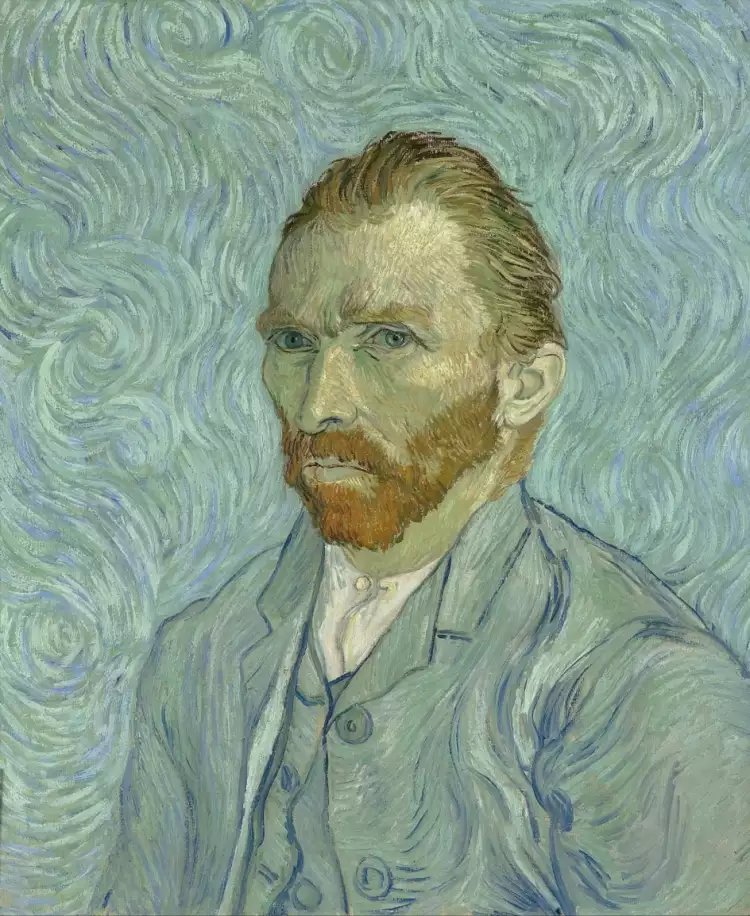 Vincent van Gogh. Self-Portrait, 1889
Vincent van Gogh. Self-Portrait, 1889
Biography of Vincent van Gogh
Vincent van Gogh was born on March 30, 1853, in the Dutch village of Groot-Zundert. His father was a Protestant church pastor, and his mother was a strict and demanding woman. Later, the artist described his childhood as "cold and sterile." Nevertheless, he had the opportunity to draw from an early age, and these activities were encouraged. Vincent had a younger brother, Theo, who always supported the artist, as well as three sisters.
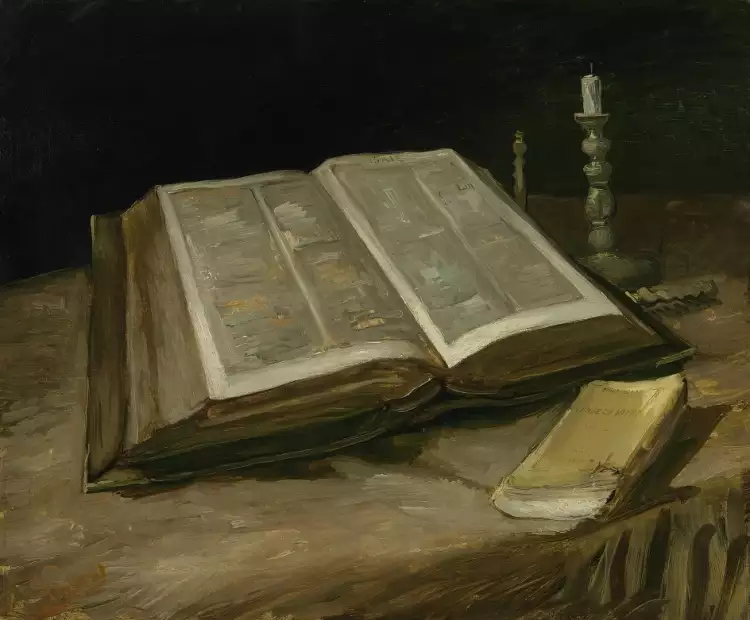 Vincent van Gogh. Still Life with Open Bible, 1885
Vincent van Gogh. Still Life with Open Bible, 1885
At the age of 16, with the support of his uncle, Vincent van Gogh found employment as an art dealer in a company in The Hague - a traditional occupation for the family. Four years later, he was transferred to London, and this period was one of the most prosperous in the artist's life. At the age of twenty, he was already earning more than his father. However, prosperity was not what Van Gogh's soul aspired to. He left the lucrative profession and returned to his parents to devote himself to the Church.
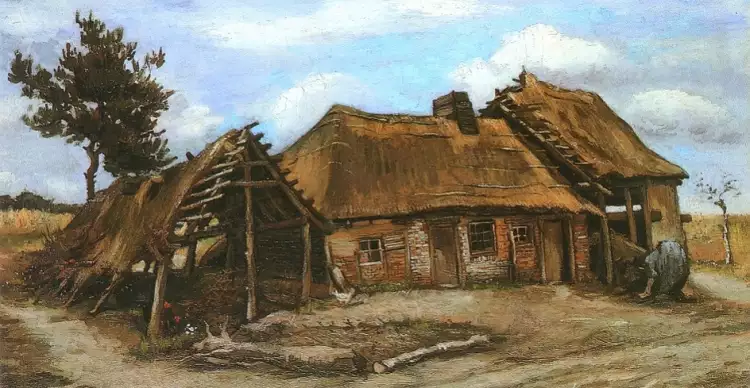 Vincent van Gogh. A house with a dilapidated barn and a bowed woman, 1885
Vincent van Gogh. A house with a dilapidated barn and a bowed woman, 1885
In 1879, as a lay missionary, Van Gogh went to a poor mining village in Belgium. The poverty of the miners impressed the young man so much that he gave them most of his food and clothes and even gave up his living space, sleeping on straw in a small hut. However, such zeal did not find understanding from the church authorities. A year later, Vincent was prohibited from preaching, accusing him of "undermining the dignity of a priest." He became disillusioned with religion and decided to dedicate himself to his art.
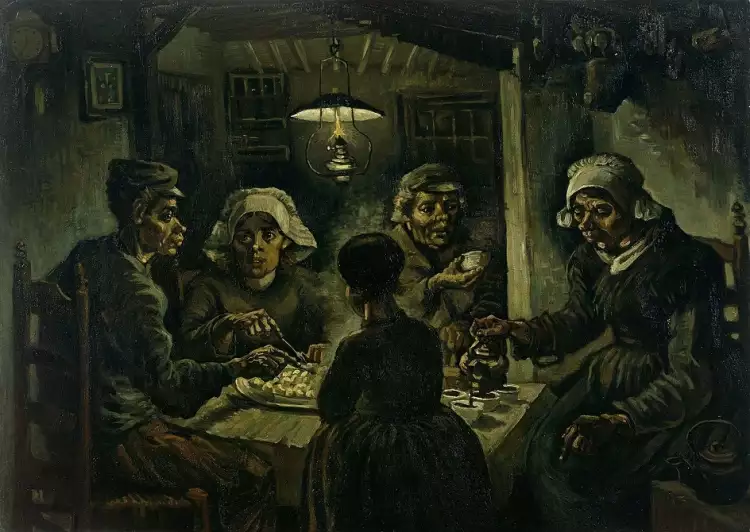 Vincent van Gogh. The Potato Eaters, 1885
Vincent van Gogh. The Potato Eaters, 1885
Early Paintings of Van Gogh
Vincent van Gogh's first true painting teacher was Anton Mauve, who was also a distant relative. When Vincent's father called him worthless and expelled him from home, Mauve took him in at The Hague, with financial support from Vincent's brother, Theo. However, their relationship soured when Van Gogh became involved with a woman of ill repute.
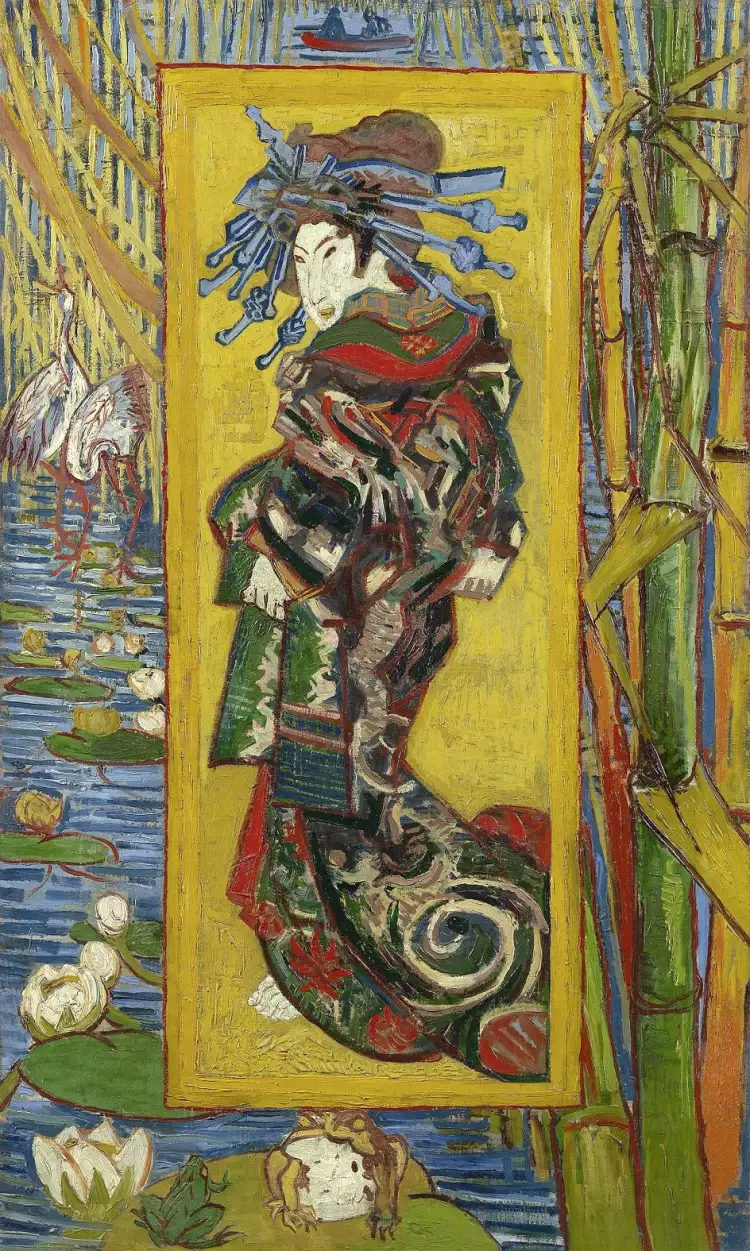 Vincent van Gogh. Courtesan, 1887
Vincent van Gogh. Courtesan, 1887
In 1885, the artist's first known canvas, "The Potato Eaters," emerged. Theo, who was involved in art dealing, exhibited it publicly but criticized it for its dark palette. By that time, Theo had already acquainted himself with the Impressionists and realized that they represented the future. He called his brother to Paris to introduce him to the new style and contemporary color theory.
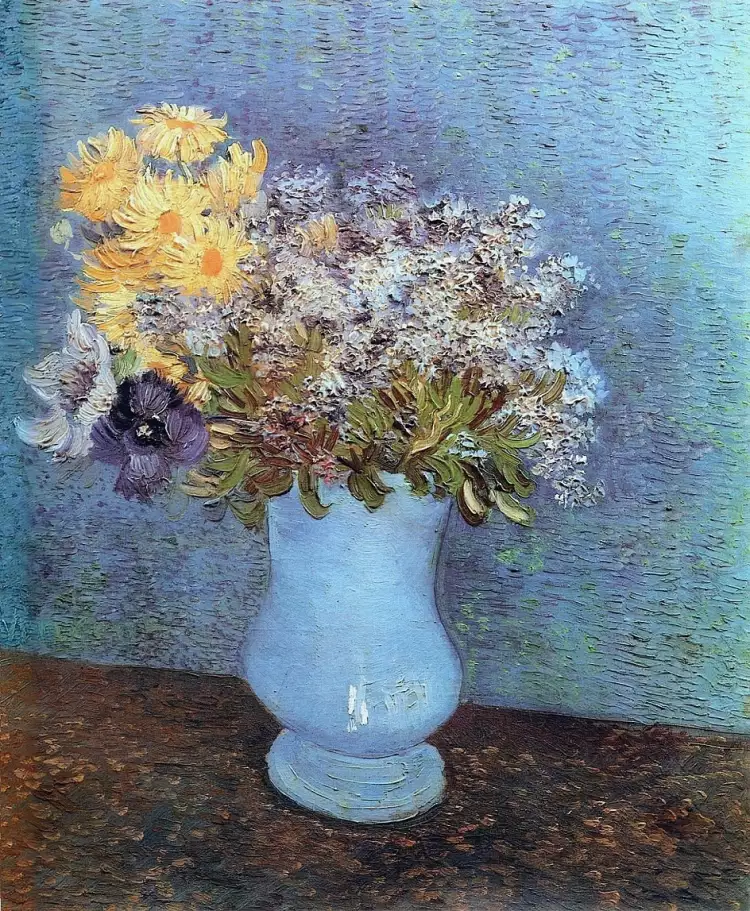 Vincent van Gogh. Vase with lilacs, daisies and anemones, 1887
Vincent van Gogh. Vase with lilacs, daisies and anemones, 1887
In early 1886, Van Gogh moved to Paris, where he met Henri de Toulouse-Lautrec, Camille Pissarro, and Paul Signac, and got familiar with the works of Claude Monet and Edgar Degas. The artist also became captivated by Eastern engravings, freely copying them and borrowing many techniques. The Parisian period lasted only two years, but during this time, he created a vast number of paintings close in spirit to the Impressionists, especially numerous and colorful still lifes.
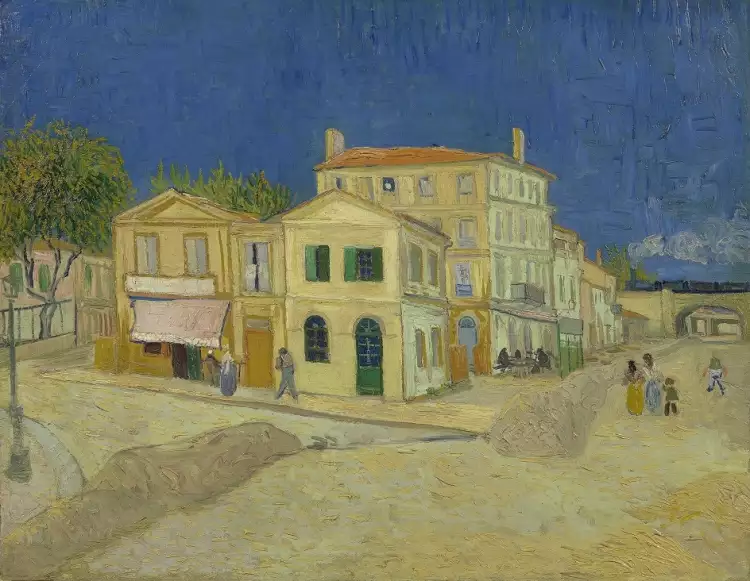 Vincent van Gogh. The Yellow House, 1888
Vincent van Gogh. The Yellow House, 1888
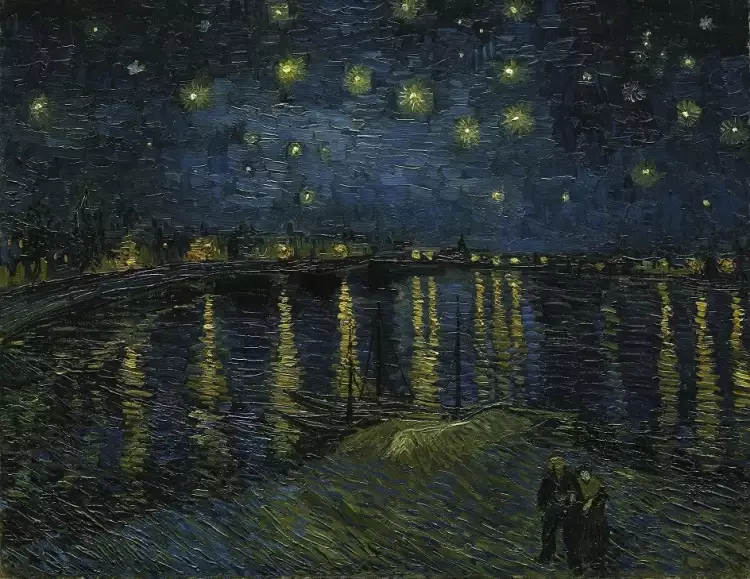 Vincent van Gogh. Starry Night Over the Rhône, 1888
Vincent van Gogh. Starry Night Over the Rhône, 1888
Van Gogh's Mature Period
In February 1888, Van Gogh arrived in Arles and was captivated by the vibrant colors under the southern sun. He painted blossoming trees, wheat fields, rural landscapes, and sunflowers. "Bedroom in Arles," "Starry Night Over the Rhone," and some other well-known paintings were created to adorn the Yellow House, where the artist lived. He had the idea to establish a commune for painters who would create masterpieces in this blessed region. However, only Paul Gauguin responded to Vincent's call.
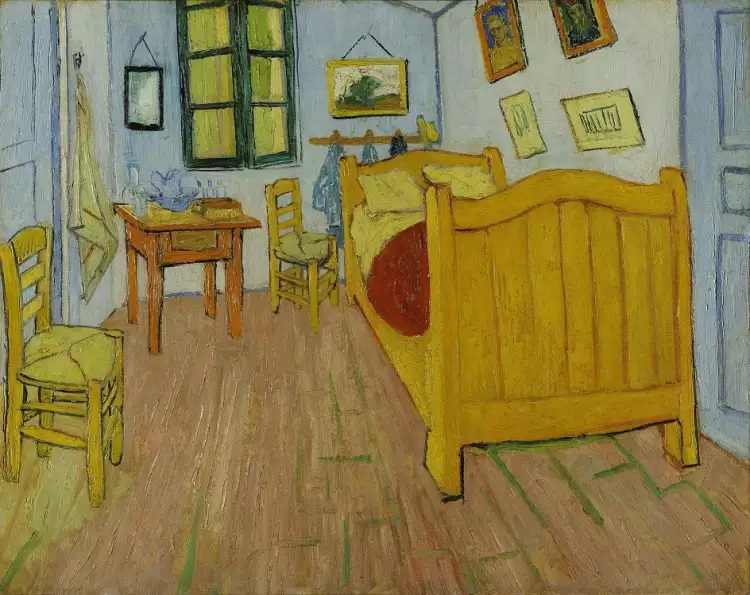 Vincent van Gogh. Bedroom in Arles, 1888
Vincent van Gogh. Bedroom in Arles, 1888
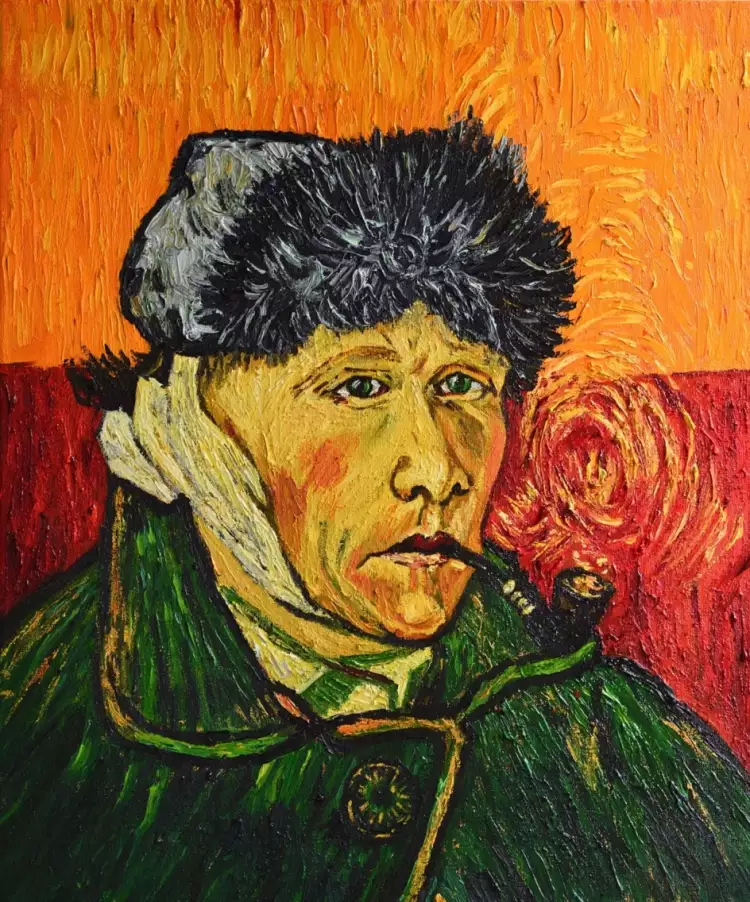 Vincent van Gogh. Self-portrait with Bandaged Ear and Pipe, 1889
Vincent van Gogh. Self-portrait with Bandaged Ear and Pipe, 1889
Van Gogh was delighted by Gauguin's arrival as he admired his work. But soon, they began to argue. Vincent wanted to have an equal relationship, while the dominant Gauguin, both in daily life and in art, set his own rules and assumed the role of a mentor. The atmosphere became excessively tense, leading to a breakdown in Van Gogh, who was not entirely mentally stable.
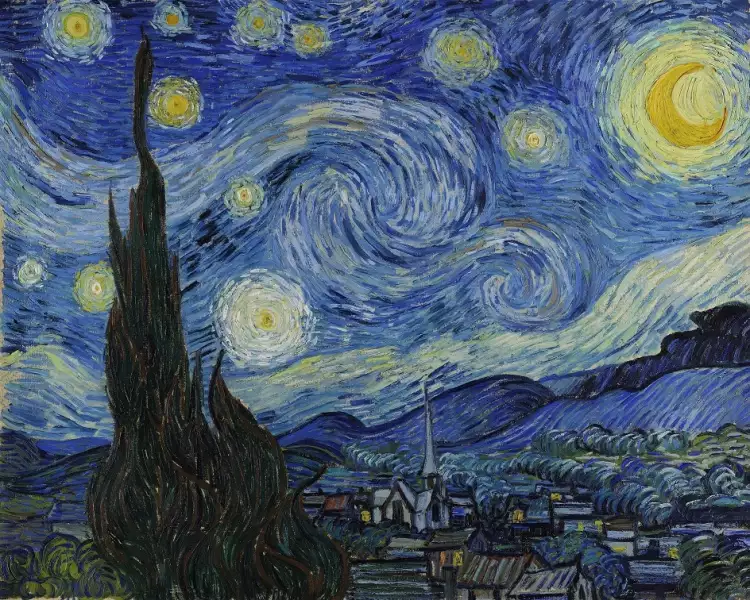 Vincent van Gogh. The Starry Night, 1889
Vincent van Gogh. The Starry Night, 1889
The famous story of him cutting off his ear and threatening Gauguin with a bloodied knife is only known from Gauguin's account and raises doubts. It is more likely that the incident was caused by shaving with trembling hands due to excitement. Nevertheless, Gauguin left Arles without saying goodbye, and Van Gogh was admitted to a psychiatric hospital in Saint-Rémy.
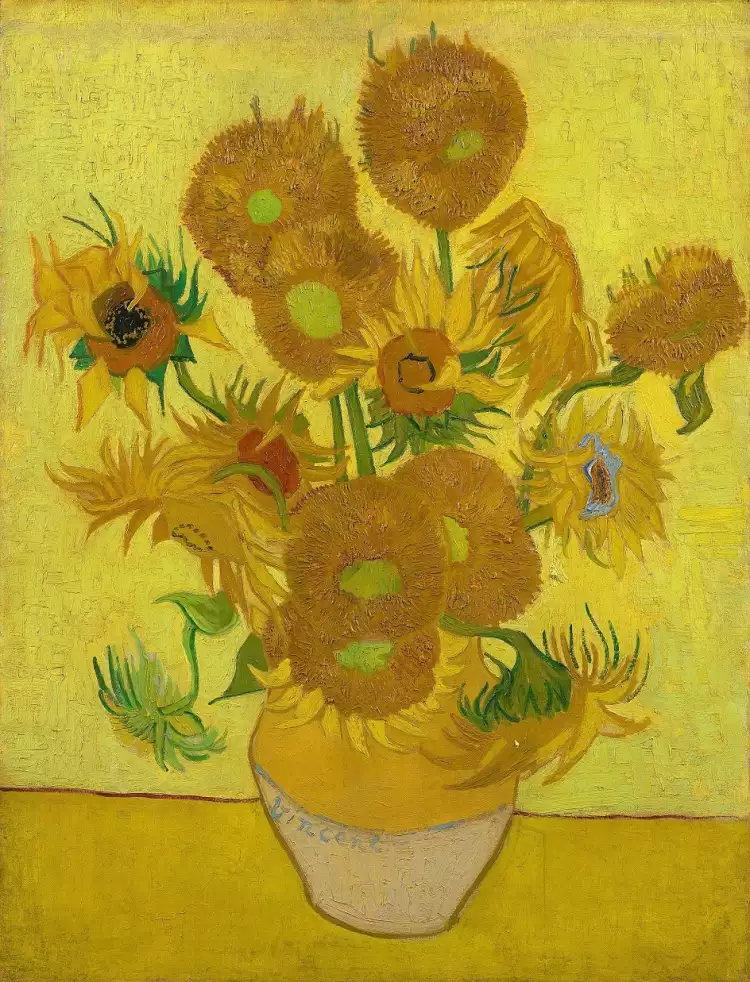 Vincent van Gogh. Sunflowers, 1889
Vincent van Gogh. Sunflowers, 1889
Under the care of doctors, the artist spent about a year. He was allowed to paint, and even in such constrained conditions, he created magnificent works, including the famous "Starry Night." After being discharged, Van Gogh settled in Auvers-sur-Oise and visited Theo in Paris. By then, Theo's health and financial affairs had deteriorated. A quarrel erupted between the brothers, and Vincent hurriedly returned.
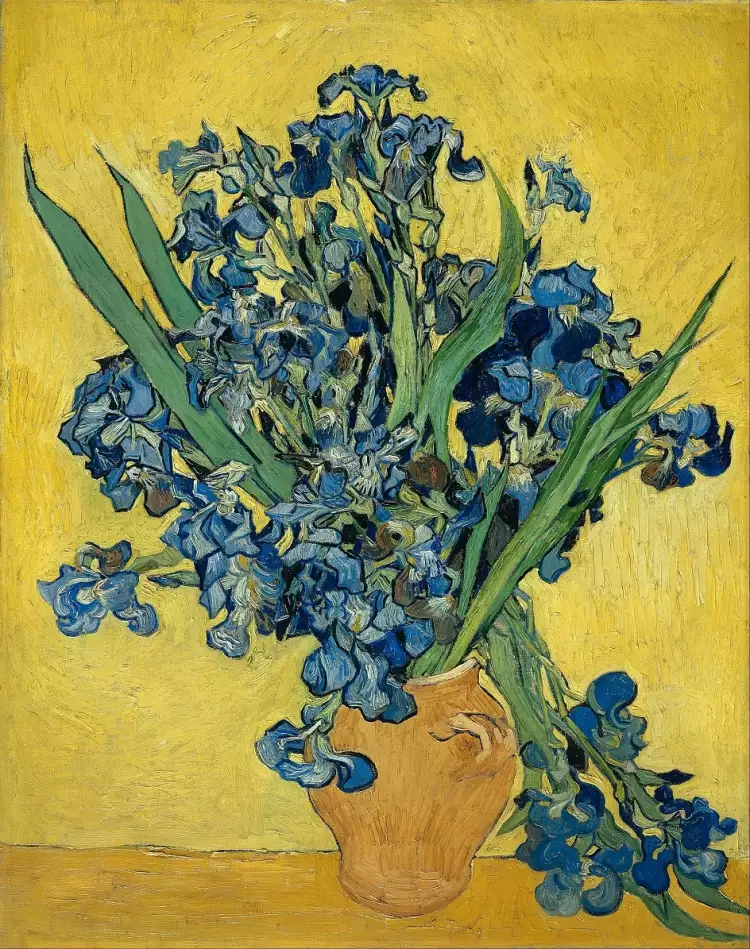 Vincent van Gogh. Vase with Irises Against a Yellow Background, 1890
Vincent van Gogh. Vase with Irises Against a Yellow Background, 1890
Two weeks later, he shot himself in the chest with a revolver. The bullet missed vital organs but could not be removed by local doctors. Two days later, on July 29, 1890, the artist died of infection. Theo, who arrived hastily, held his brother's hand in his final moments and survived him for only six months.
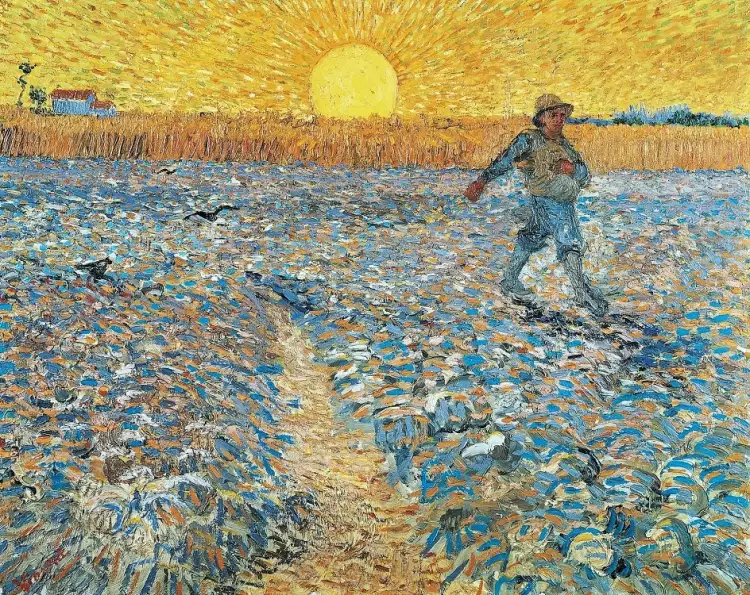 Vincent van Gogh. The Sower, 1888
Vincent van Gogh. The Sower, 1888
The artist had no children but left a nephew - Theo's son, also named Vincent. He devoted his life to preserving and popularizing the work of the brilliant painter. Van Gogh's works influenced the Fauvist Henri Matisse and German expressionists. An important part of his legacy is the published correspondence with his brother, providing an insight into the creative process from within.
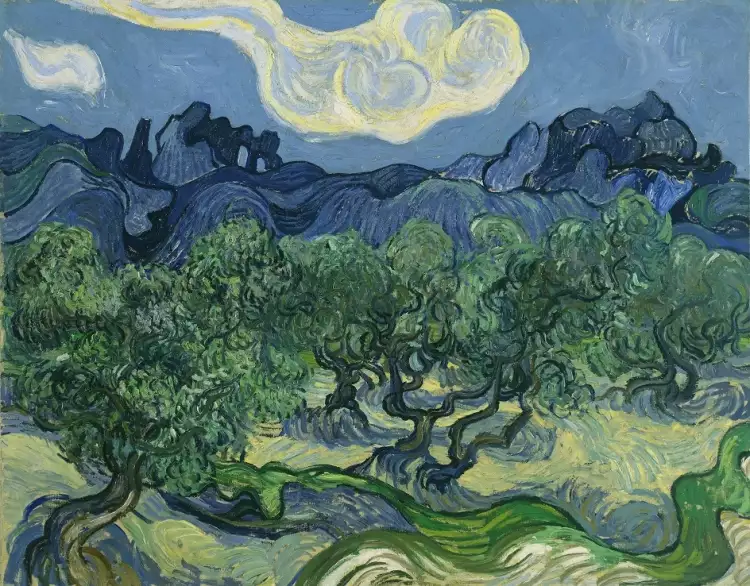 Vincent van Gogh. Olive Trees with the Alpilles in the Background, 1889
Vincent van Gogh. Olive Trees with the Alpilles in the Background, 1889
Van Gogh's Most Famous Paintings
Vincent Van Gogh actively pursued painting for only 10 years, but during this time, he created more than 800 oil paintings and even more graphic works. The most significant pieces belong to the last years of the artist's life. Here are some of the renowned works by the author:
- "The Sower", 1888. This is one of a series of works inspired by the art of Jean-François Millet. The peasant sowing seeds under the sun's rays symbolizes life.
- "Sunflowers", 1888 - a series of seven paintings. These masterpieces are displayed in exhibition halls of various museums around the world. Dim lighting is a mandatory condition for preserving Van Gogh's paintings.
- "Olive Trees with the Alpilles in the Background", 1889. This painting is considered a pair to "Starry Night." It was created during the same period with the same swirling strokes.
- "Irises", 1889. The artist created a whole series of works featuring purple irises. He described this piece as "full of air and life."
- "Prisoners' Round", 1890. When the artist was not allowed to leave the asylum, he copied other masters' paintings. This reinterpretation of Gustave Dore's engraving shows an intensified sense of oppression and claustrophobia.
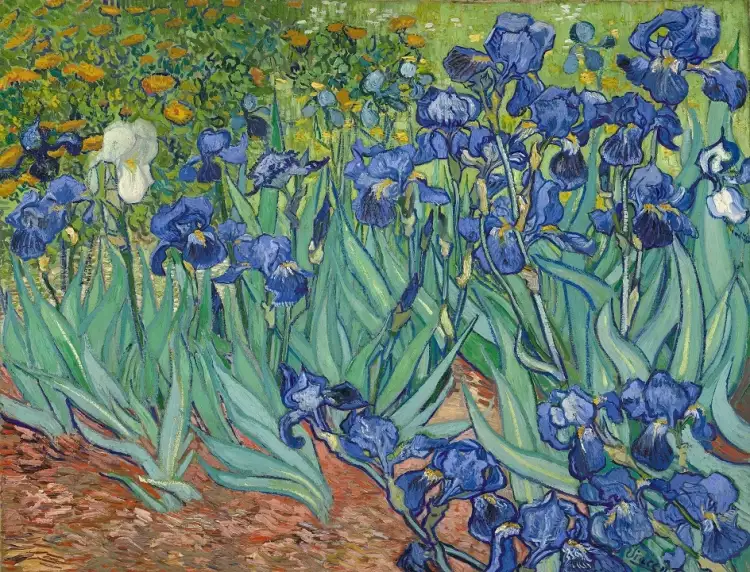 Vincent van Gogh. Irises, 1889
Vincent van Gogh. Irises, 1889
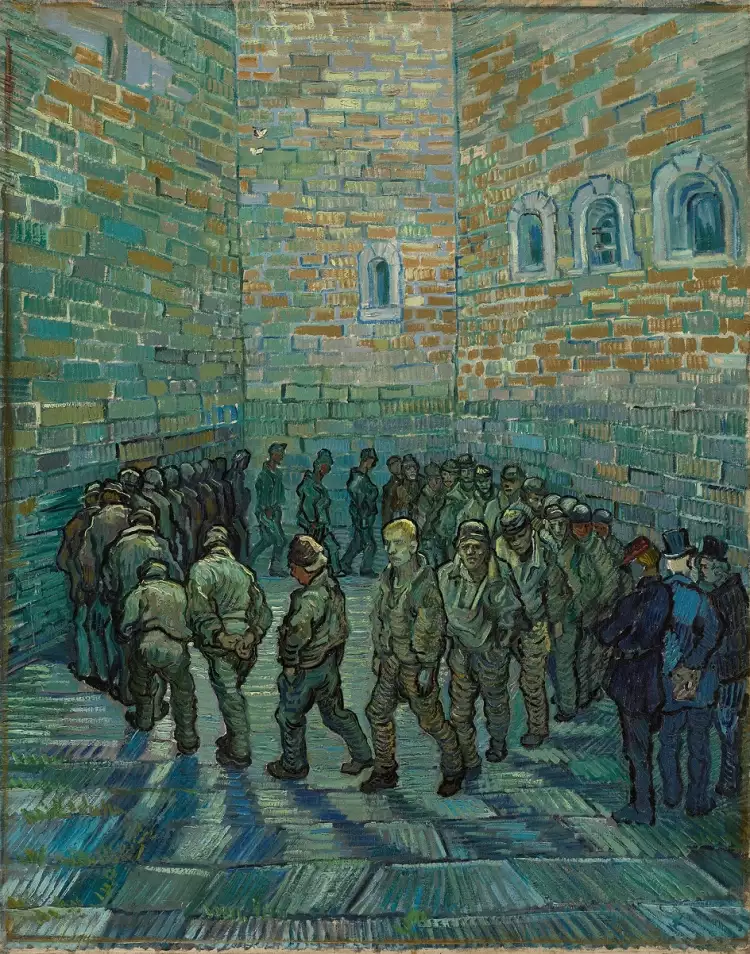 Vincent van Gogh. Prisoners' Round, 1890
Vincent van Gogh. Prisoners' Round, 1890
Paintings by famous and lesser-known artists are conveniently available for purchase at auctions. Auctions of antiques and contemporary artworks are regularly held on the auction portal Very Important Lot. On our website, you can also buy paintings directly from contemporary artists at affordable prices, as they are continually presented here.
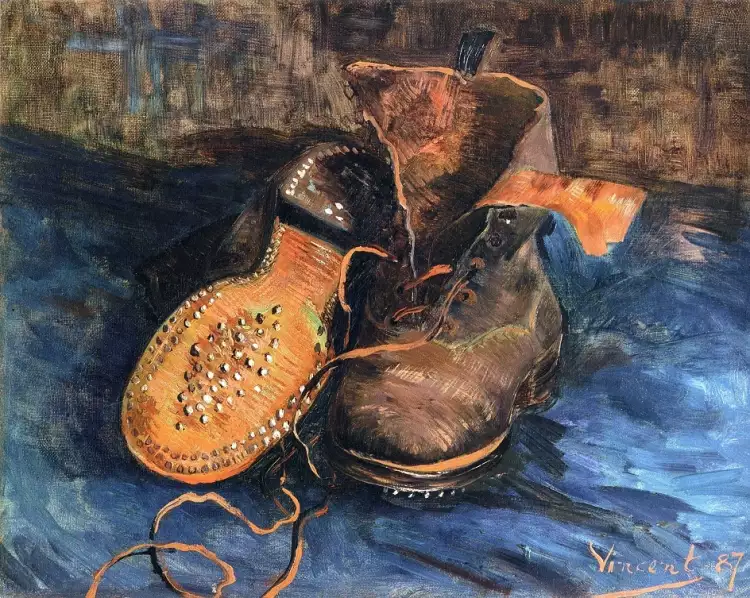
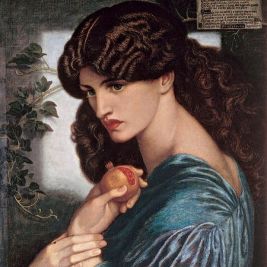 Pre-Raphaelites - the romantics of Victorian England
Pre-Raphaelites - the romantics of Victorian England  Documentary Photography: Photo story about important events and everyday life
Documentary Photography: Photo story about important events and everyday life 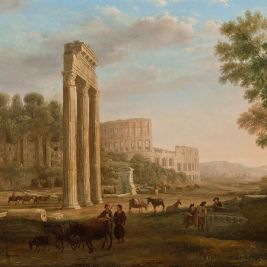 The most famous representatives of French classicism in painting
The most famous representatives of French classicism in painting  Auction: essence, types, history, the most famous art auctions
Auction: essence, types, history, the most famous art auctions 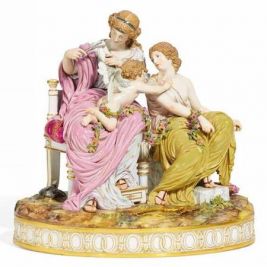 Meissen Porcelain: The History of the Manufactory
Meissen Porcelain: The History of the Manufactory  Orders of France - from the Middle Ages to the present day
Orders of France - from the Middle Ages to the present day 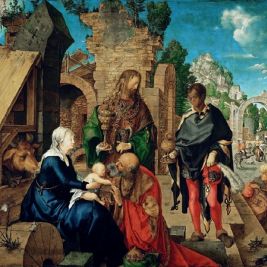 Art: its essence, types, genres, and history
Art: its essence, types, genres, and history  Mannerism - an elegant, pretentious, and ambiguous style of the 16th and 17th centuries
Mannerism - an elegant, pretentious, and ambiguous style of the 16th and 17th centuries  Still life is a genre of painting that perfectly reflects the artist's inner universe
Still life is a genre of painting that perfectly reflects the artist's inner universe 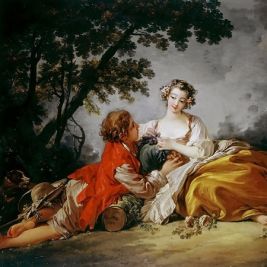 Rococo: Peasant Idylls of Court Painters
Rococo: Peasant Idylls of Court Painters